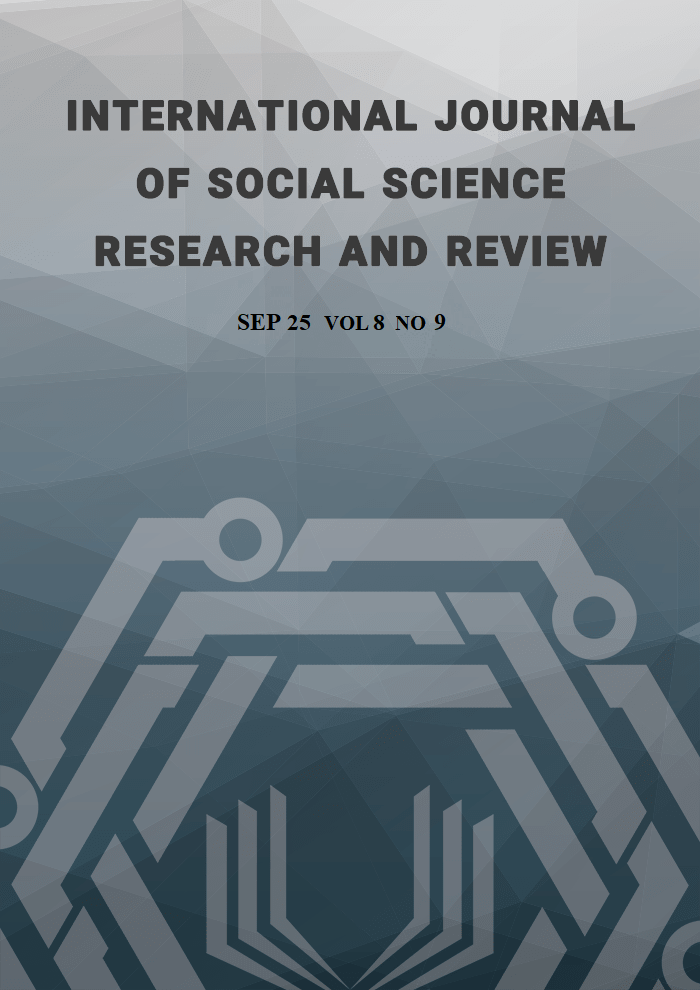Beyond Compliance: A Comprehensive OSH-Based Evaluation of Hospital Staff Welfare in India
Abstract
Occupational safety and health bracket (OSH) is a critical yet underexplored dimension of hospital infrastructure in India, despite increasing global emphasis on employee welfare. . Many Indian hospitals continue to under prioritise staff experiences related to safety, mental health and harassment. This study addresses this gap by exploring hospital staff welfare through four key lenses: exposure to workplace hazards, adequacy of safety provisioning, mental well-being, and incidence of workplace bullying rather than focusing only on structural safety. The research places equal emphasis on emotional and social dimensions of employee welfare. Emphasizing the emotional and social dimensions of employee welfare, the study employs a survey-based quantitative methodology involving 73 hospital employees across various t departments and experience levels. Using a quantitative methodology, responses were analysed using statistical tests using t-tests, ANOVA, and correlation analysis to assess statistically significant differences across gender work, experience, department, and working hours. Findings reveal that male employees, and those with 4 to 10 years of experience reported significantly higher levels of bullying, indicating possible issues with hierarchy or departmental culture. While differences in safety provisioning were not statistically significant, observed patterns indicate potential under-provisioning in specific departments. Rental scores were uniform across all groups, which may reflect either genuine consistency or lack of awareness/reporting around psychological distance. Exposure to work place hazard, show significant gender based differences highlighting the need for targeted interventions. Overall the study reveals that even in hospitals that appear to comply with basic safety norms, fall short in addressing how safety and well-being are experienced by staff in practice. These findings underscore the necessity for a more inclusive,employee centric approach to (OSH) in the Indian healthcare system that integrates both physical and mental wellbeing as essential components of staff welfare.
References
Almost, J. M., VanDenKerkhof, E. G., et. al. (2018). A study of leading indicators for occupational health and safety management systems in healthcare. BMC Health Services Research, 18(1). https://doi.org/10.1186/s12913-018-3103-0
Decent work. (2025b, May 22). International Labour Organization. https://www.ilo.org/topics-and-sectors/decent-work
De Simone, S. (2015). Wellbeing at work: A survey on perception of health care workers. Rivista Internazionale Di Scienze Sociali, 123(4), 395–412. http://www.jstor.org/stable/26151498
Jhabvala, R. (2013). Informal Workers & the Economy. Indian Journal of Industrial Relations, 48(3), 373–386. http://www.jstor.org/stable/23510784
Lahariya, C., & Menabde, N. (2015). India′s draft National Health Policy, 2015: Improving policy to implementation effectiveness. Journal of Family Medicine and Primary Care, 4(3), 291. https://doi.org/10.4103/2249-4863.161299
Michaels, D., & The George Washington University. (2018). Testimony of Professor David Michaels. In House Education and the Workforce Committee, Subcommittee on Workforce Protections, United States House of Representatives, A More Effective and Collaborative OSHA: A View From Stakeholders. https://democrats-edworkforce.house.gov/imo/media/doc/DMichaels%20Testimonyw.attachments2%2027%202018.pdf
Ramachandran, G., & Sigamani, P. (2014). Occupational health and safety in India: The need for reform. Economic and Political Weekly, 49(47), 26–28. http://www.jstor.org/stable/24481023
Rai, R., El-Zaemey, S., Dorji, N., Rai, B. D., & Fritschi, L. (2021). Exposure to occupational hazards among health care workers in low- and middle-income countries: A scoping review. International Journal of Environmental Research and Public Health, 18(5), 2603. https://doi.org/10.3390/ijerph18052603
Razavi, S., & Staab, S. (2010). Underpaid and overworked: A cross‐national perspective on care workers. International Labour Review, 149(4), 407–422. https://doi.org/10.1111/j.1564-913x.2010.00095.x
Romate, J., & Rajkumar, E. (2022). Exploring the experiences, psychological well-being and needs of frontline healthcare workers of government hospitals in India: A qualitative study. Humanities and Social Sciences Communications, 9(1). https://doi.org/10.1057/s41599-022-01093-9
Stefania, S.D. (2015). Wellbeing at Work: A Survey on Perception of Healthcare Workers. Rivista Internazionale di Scienze Sociali , Ottobre-Dicembre 2015, Anno 123, No. 4 (Ottobre-Dicembre 2015), pp. 395-412. https://sci-hub.se/https://www.jstor.org/stable/26151498
Tripathy, J. (2014). Commentary: Occupational health hazard in India: Need for surveillance and research. Current Science, 106, 668–669
NIOSH alert: preventing needlestick injuries in health care settings. (1999). https://doi.org/10.26616/nioshpub2000108
Health Workforce (HWF). (2020, July 7). Global strategy on human resources for health: Workforce 2030. https://www.who.int/publications/i/item/9789241511131
Magalhães, L. M. C. A., Da Silva Costa, K. T., Capistrano, G. N., Leal, M. D., & De Andrade, F. B. (2022). A study on occupational health and safety. BMC Public Health, 22(1). https://doi.org/10.1186/s12889-022-14584-w
Guerin, R. J., & Sleet, D. A. (2020). Using behavioral theory to enhance occupational safety and health: Applications to health care workers. American Journal of Lifestyle Medicine, 15(3), 269–278. https://doi.org/10.1177/1559827619896979
Caruso, C. C. (2013). Negative impacts of shiftwork and long work hours. Rehabilitation Nursing, 39(1), 16–25. https://doi.org/10.1002/rnj.107
Baylina, P., Barros, C., Fonte, C., Alves, S., & Rocha, Á. (2018). Healthcare workers: Occupational health promotion and patient safety. Journal of Medical Systems, 42(9). https://doi.org/10.1007/s10916-018-1013-7
Publications Office of the European Union. (2011). Occupational health and safety risks in the healthcare sector. Publications Office of the EU. https://op.europa.eu/en/publication-detail/-/publication/b29abb0a-f41e-4cb4-b787-4538ac5f0238/language-en
Ryff, C. D. (1989). Happiness is everything, or is it? Explorations on the meaning of psychological well-being. Journal of Personality and Social Psychology, 57(6), 1069–1081. https://doi.org/10.1037/0022-3514.57.6.1069
JCDR (n.d.) Anxiety, Depression, Mental health, Occupation, Social function, Somatic symptoms. https://jcdr.net/article_fulltext.asp?issn=0973-709x&year=2014&volume=8&issue=9&page=WC01&issn=0973-709x&id=4835
Juba, O. & Cardiff Metropolitan University. (2024). Occupational Health and Safety Challenges Faced by Caregivers and the Respective Interventions to Improve their Wellbeing. International Journal of Innovative Science and Research Technology, 3225–3229. https://doi.org/10.38124/ijisrt/IJISRT24JUN1000
Pramusiwi, W. M., Hariyono, W., & Ruliyandari, R. (2024). Analysis of Occupational Safety and Health (OSH) Risks in Hospitals: Literature review. Media Publikasi Promosi Kesehatan Indonesia (MPPKI), 7(8), 2051–2061. https://doi.org/10.56338/mppki.v7i8.5654
Saha, R. K. (2018). Occupational health in India. Annals of Global Health, 84(3), 330–333. https://doi.org/10.29024/aogh.2302
Hanumanthayya, M., Bamne, S. N., Nath, J., Sahoo, A. K., & Sharma, A. K. (2023). Healthcare management approaches for improving employee occupational safety. Dialnet. https://dialnet.unirioja.es/servlet/articulo?codigo=10035684
Copyright (c) 2025 Ahana Gang

This work is licensed under a Creative Commons Attribution-NonCommercial-NoDerivatives 4.0 International License.
Copyright for this article is retained by the author(s), with first publication rights granted to the journal. This is an open-access article distributed under the terms and conditions of the Creative Commons Attribution license (https://creativecommons.org/licenses/by-nc-nd/4.0/).





